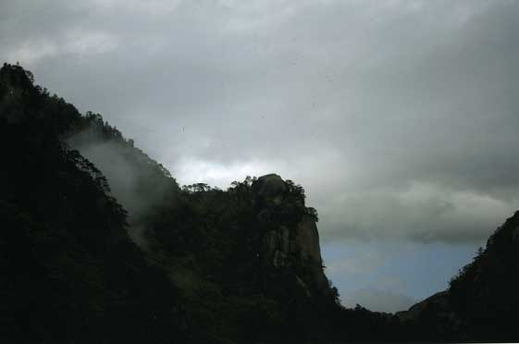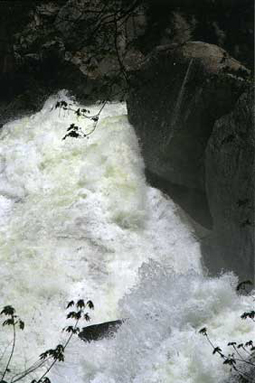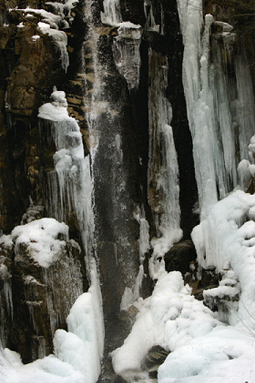 |
Mountain (Yamanashi, 2007)
Digital archival print on Izumo Mingei Mitsumata paper
750 x 500 mm
© Seiichi Yamashita |
Amid Tokyo's sea of galleries, there are surprisingly few venues devoted to photography as an art form. One exception is gallery bauhaus, whose owner, Tatsuo Kotaki, himself an accomplished photographer, minces no words in declaring that "there are no good photo galleries in Japan." Kotaki opened bauhaus two years ago expressly to showcase photography as a fine art, a notion he says has yet to gain traction with Japan's art establishment.
Kotaki's commitment is eloquently reflected in his current show, "The Breathing of Water," a series of stunning photographs printed on washi (traditional Japanese paper) by a relatively unknown artist, Seiichi Yamashita. It is Yamashita's first public exhibition anywhere.
Tucked in an alley behind the Kanda Myojin shrine, gallery bauhaus occupies an attractively contemporary space of concrete walls and wood fixtures, with ground-floor and basement galleries connected by a deep, narrow staircase. It provides an excellent backdrop for Yamashita's work. At once gorgeous and subdued, his large prints depict a world of misty mountains, frozen waterfalls and rushing streams. All are digital color photos -- yet when printed on washi, they magically acquire the look of sumi-ink landscape paintings of a bygone era.
A man in his fifties who recently retired from a career as an interior photographer, Yamashita had his artistic epiphany only a few years ago, when a trip to the mountains and high desert of California coincided with a number of technical breakthroughs in the photographic and printing industries.
On his 2002 visit to Yosemite National Park, Yamashita, a fan of the renowned black and white photography of that region by Ansel Adams, was struck by the difference between the dry Sierra air in which Adams worked and the humid air of Japan. Returning home, he tried to reproduce the sensation of viewing landscapes -- particularly the near-monochrome world of rocks, water and snow in winter light -- through a distinctively Japanese "filter" of rain and mist.
However, Yamashita found it impossible to achieve the effect he desired with existing technology until 2004, when the development of a high-resolution 16-bit digital camera coincided with the advent of Epson's PiezoGraph digital print technique and pigment ink. These innovations collectively enabled quality printing on washi and other non-traditional surfaces. Yamashita, who says he had never liked standard photo paper anyway, sought the advice of a Nihonbashi washi shop and, through much trial and error, settled on Izumo washi as his printing paper of choice.
The fruits of Yamashita's experimentation can be seen in the two-dozen prints currently on display at gallery bauhaus (until October 25). The uneven texture of the washi adds a depth that contrasts dramatically with the flat plane of ordinary prints. And while his images do indeed evoke the stark monochromatic beauty of Adams's work, the subtle hints of moisture and color in Yamashita's prints create a world that is richer, more three-dimensional, yet still delicately subdued in the great tradition of Chinese and Japanese nature paintings.
 |
|
 |
Waterfall (Yosemite, 2006)
Digital archival print on Izumo Mingei Mitsumata paper
750 x 500 mm
© Seiichi Yamashita |
|
Waterfall with snow (Kiso, 2008)
Digital archival print on Izumo Mingei Mitsumata paper
750 x 500 mm
© Seiichi Yamashita |
|
|
|
 |
|
|
Stairwell leading down to the basement exhibit space at gallery bauhaus
(Image courtesy of gallery bauhaus) |
|
|
|